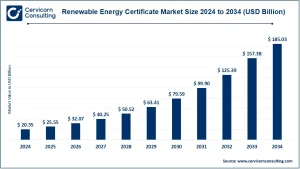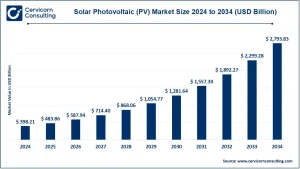Market Overview
The green hydrogen supply chain market is witnessing rapid expansion, propelled by global efforts to decarbonize, advances in hydrogen production technologies, and strong investments from both public and private sectors. Green hydrogen, generated by electrolyzing water using renewable sources such as wind, solar, and hydroelectric power, functions as a clean energy carrier with minimal carbon footprint. Europe is currently leading the adoption, with countries like Germany, France, and the Netherlands driving large-scale electrolyzer deployment supported by national hydrogen strategies.
Get a Free Sample: https://www.cervicornconsulting.com/sample/2568
Key Market Trends
-
Technological Advancements in Electrolysis
Breakthroughs in Proton Exchange Membrane (PEM) and Alkaline Electrolyzers have significantly enhanced efficiency and lowered production costs. Between 2010 and 2022, electrolyzer costs fell by roughly 60%, making green hydrogen increasingly competitive with conventional fossil fuels. Companies such as Siemens Energy and Nel ASA are investing heavily in next-generation electrolyzers for industrial and power sector applications. -
Policy and Regulatory Support
Government initiatives worldwide are accelerating green hydrogen adoption through subsidies, tax incentives, and comprehensive regulatory frameworks. The EU Green Deal and the U.S. Inflation Reduction Act offer financial support and tax credits for green hydrogen projects, while countries like Japan and South Korea aim to achieve multi-gigawatt electrolyzer capacities by 2030. -
Integration with Renewable Energy
Falling renewable energy costs are making green hydrogen production more economically viable. Surplus solar and wind energy can be converted into hydrogen, providing energy storage solutions and supporting grid stability. Large-scale projects, such as the Neom Green Hydrogen Project in Saudi Arabia, illustrate successful renewable-to-hydrogen integration. -
Expansion of Hydrogen Infrastructure
The development of hydrogen refueling stations, pipelines, and storage terminals is driving market growth. Improved infrastructure ensures reliable supply for transportation, heavy industry, and power generation applications, facilitating practical utilization of green hydrogen. -
Private Sector Investments and Strategic Partnerships
Major players like Air Products, BP, and Plug Power are investing billions into green hydrogen initiatives. Strategic collaborations, joint ventures, and cross-border partnerships are fostering technology exchange, scaling production, and establishing global supply chains.
Market Drivers
-
Global Decarbonization Initiatives: Increasing demand for low-carbon alternatives like green hydrogen is fueled by corporate and governmental net-zero targets.
-
Technological Advancements: Enhanced electrolyzer efficiency and scalability are projected to reduce production costs from USD 4–6/kg in 2020 to approximately USD 1.5/kg by 2030.
-
Government Support: Programs such as the EU’s EUR 4 billion Green Deal investment incentivize infrastructure and technology deployment.
-
Industrial Adoption: Green hydrogen is being integrated into steel production, ammonia manufacturing, chemical processes, and fuel cell transportation.
-
Private Sector Investment: High-profile commitments, such as BP’s USD 8.4 billion investment in the Neom Project, underscore growing market confidence.
Impact of Trends and Drivers
-
Regional Impact: Europe leads in electrolyzer deployment, while Asia-Pacific and the Middle East are rapidly expanding production and infrastructure capabilities.
-
Sectoral Impact: Transportation, power generation, and industrial manufacturing are the most affected sectors, benefiting from green hydrogen’s ability to decarbonize hard-to-electrify areas.
-
Technological Impact: Reduced production costs and efficiency gains are making green hydrogen increasingly feasible for both industrial-scale and residential applications.
Challenges & Opportunities
-
Challenges: High production expenses, complex storage requirements, and the need for extensive infrastructure remain key barriers.
-
Opportunities: Continuous technological innovations, international collaborations, and government incentives provide avenues for market growth and the creation of a robust global supply chain.
Future Outlook
The green hydrogen supply chain market is set for transformative growth. Continued investments in electrolyzer technology, expansion of hydrogen refueling infrastructure, and falling production costs are expected to make green hydrogen a mainstream energy carrier. By 2034, the market is projected to expand considerably, driven by increasing industrial adoption, supportive government policies, and strategic private sector investments, paving the way for a sustainable, carbon-neutral energy future.
Reference: Cervicorn Consulting – Green Hydrogen Supply Chain Market


